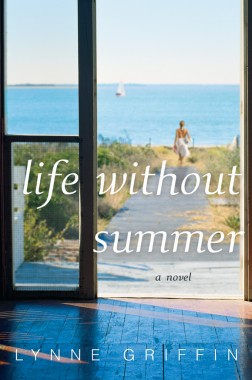What It All Means, As Suggested by Virgina Woolf
by Hannah
Lisa at Eudaemonia mentioned a few weeks ago she was reading Virginia Woolf's To the Lighthouse, a book picked off my mother's floor years ago to save from donation. I read it, found it murky but interesting and stuck on my own bookshelf. Back then I was not yet living a domestic life in any way, not yet focused on fiction at a deeper level. Passages spoke to me, and I liked how the perspectives shifted, sometimes paragraph to paragraph, because it reminded me of a movie in which the viewer can hear everyone's thoughts aloud.
Thanks to Lisa, I picked up To the Lighthouse again, and was wowed. Within seven paragraphs in one early spot, Woolf starts with Mrs. Ramsay's point of view on her husband and a specific domestic scene, shifts to the son's viewpoint, includes five bits of dialogue, only one using quotes, then wraps up with Mr. Ramsay's point of view. It works, I swear!
Heaven help the woman, of course, if she'd passed that around for someone to critique. What would people say? The rules are such, the scene is confusing; it certainly won't sell. Still, I have tucked this scene and book away as a Guardian Angel, to use Martha Southgate's term for books that show us outstanding use of techniques and approaches we are ready to dare to attempt.
Even when it was published, this book raised eyebrows. It was experimental, pushed the envelope in terms of technique and theme, blending the two together. How do people think, how do they react in life's small situations in a way that reflects on life's greatest questions?
Woolf does offer an answer. As Lily works on her painting, she thinks about what it all means, considers asking the content poet what he thinks. She looks at her picture.
"That would have been his answer, presumably -- how "you" and "I" and "she" pass and vanish; nothing stays; all changes; but not words, not paint. Yet it would be hung in attics, she thought; it would be rolled up and flung under a sofa; yet even so, even of a picture like that, it was true. One might say, even of this scrawl, not of that actual picture, perhaps, but of what it attempted, that it "remained for ever," she was going to say, or, for the words spoken sounded even to herself, too boastful, to hint, wordlessly..."
Maybe one answer writers look for lies in the rethinking, the pushing of the envelope, no matter what anyone tells us the rules might be, so that even if the work is rolled up and thrown under a sofa, it still exists; no matter what, our visions remain.
Thank you, Lisa!


10 comments:
Well said, Hannah!
I've had similar thoughts about "rules" while reading Joyce Carol Oates' latest novel.
And, surprisingly, Stephen King's.
I love the fact that there are books out there that push the "rules" aside, take chances, experiment. I think when it works, it raises the bar and at the very least, it gets people talking about literature--none of which is a bad thing.
I'm curious now, Therese, and will have to look up Joyce Carol Oates latest and Stephen King's latest. Plus, it seems as though I must revisit Woolf.
Hannah,
Ah, finding balance between breaking the rules and following them, is one of the most difficult aspects of craft. I'm off to pick up my copy of Lighthouse.
Lynne
Lisa Kenney has such a great reading list on her site; worth checking out -- and I need to get that new Oates, book, too!
Hannah
I read TTL very slowly, with a highlighter in hand so I wouldn't miss anything. It was so innovative and I loved so much about it -- talk about head-hopping! But it most definitely works. The stream of consciousness approach and getting into so many heads was fascinating to me. Part II of the book is simply meant to show Time Passing and it's in a completely different style. When I was reading it, I loved knowing that Woolf was very intentional about everything she did - that everything meant something and it made me want to absorb every word. I believe this novel was actually self-published, or the equivalent of it and then went on to be recognized as one of the most innovative works of fiction of the 20th century. One of the things that's so fascinating about it is that it's very nearly plot-less. I found it brilliant, but I'm confident that any critique group would tear it apart and it would never make it past an agent's slush pile -- unless there are any agents out there who are big risk takers. It really makes you wonder how much the literary playing field has been leveled and how much innovative and interesting fiction is dismissed as being too difficult or non-formulaic. I'm so excited we're talking about this book!
The explanation of Woolf's technique and then Lisa's phrase, "head hopping," conjured up an image of a caption/cartoon balloon over each characters' head. What a satisfying method of understanding that would be for this curious reader.
Larramie, that is the perfect image. It really is like that!
Don't get me started about "rules". I'm always the one in the writer's group going, huh? wha? Free Food for Millionaires "head hops" through major and minor characters and I really dug it.
moncler outlet
moncler
supreme hoodie
golden goose outlet
yeezy boost
spongebob kyrie 5
russell westbrook shoes
yeezy shoes
adidas yeezy
air jordans
their explanation hop over to here this website click to read more visit straight from the source
Post a Comment